Franz Marc: A Creative Powerhouse
Over one century after his death, Franz Marc continues to be one of the most popular German artists of all time. He is particularly remembered for his famous representations of animals, which touch viewers with their clear and expressive message.
Franz Marc was born in Munich on February 8, 1880, the younger of two brothers. His father Wilhelm was a genre and landscape painter, and had worked on the furnishings of the Linderhof and Herrenchiemsee castles of the "fairy tale king" Ludwig II of Bavaria. In the late 1880s, however, Wilhelm Marc fell ill with multiple sclerosis, forcing him to give up his job completely in 1894 and leaving him to support a family of four with only a pension.
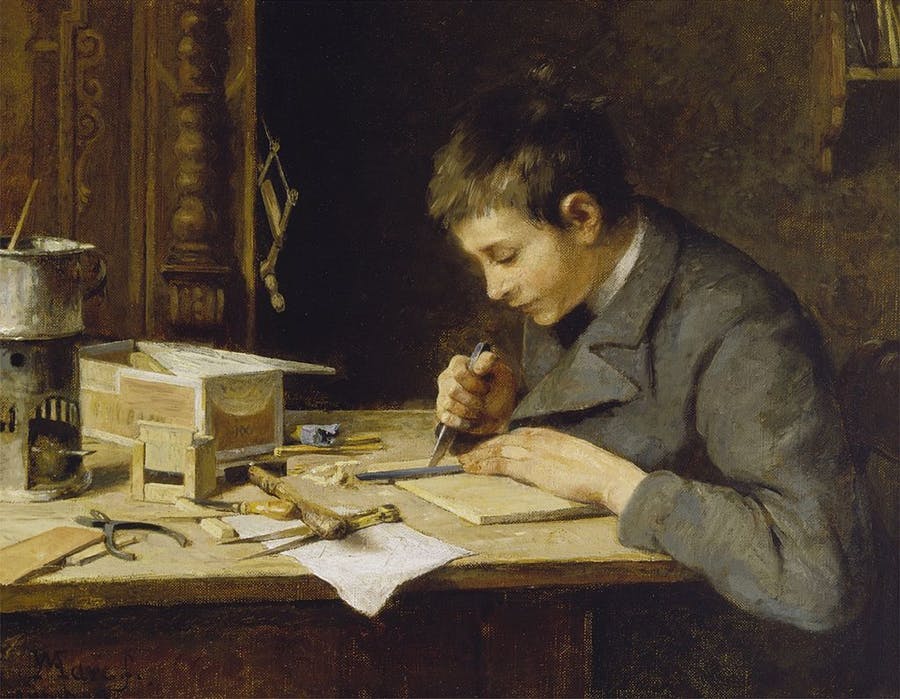
Meanwhile, Franz and his older brother Paul attended the Luitpold high school in Munich, where Albert Einstein also temporarily attended classes. The Marc family left for the summers, spending the holidays Kochel am See.
Related: Henri Matisse: Master of Fauvism and Simplification
Franz became interested in theology and philosophy while still in high school, but decided to study philology after graduating. First, however, he had to complete his one-year military service. During this time, which he spent near Augsburg, he began to consider following more closely in his father’s footsteps. When he returned to Munich he matriculated from the Ludwig Maximilians University, instead enrolling at the Munich Art Academy in 1901, the school where his father had also studied.
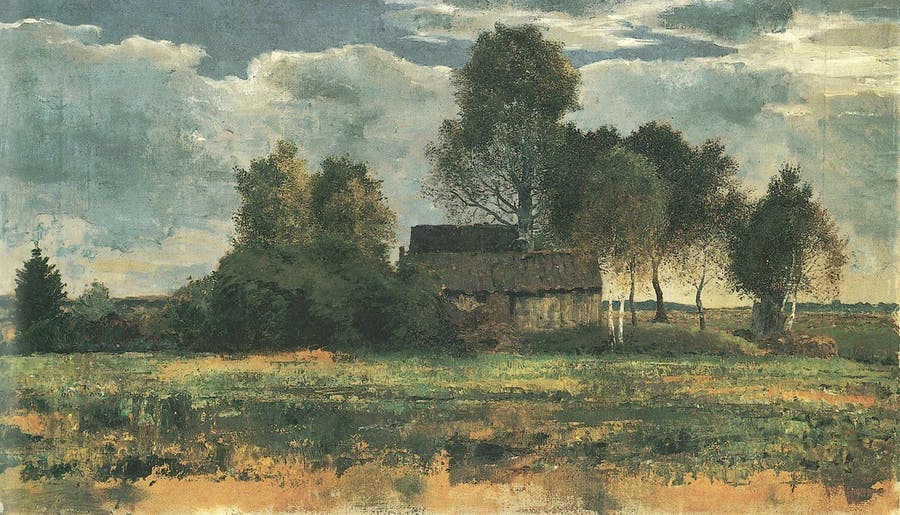
After two years in art school, Marc traveled to France with a student friend during the semester break. The stops were Brittany, Normandy, and, of course, the art mecca of Paris. His mother Sophie Maurice was born in Alsace and raised her sons bilingually, meaning that Marc had no trouble communicating on his travels. The trip proved to have a lasting impact on the young artist, and his enthusiasm about the stained glass windows of the Gothic cathedrals as well as the Japanese woodblocks that he saw had a discernible influence in his later work.
Related: Juan Gris: The New Cubist on the Block
Back home in Munich, Marc said goodbye to the academy and moved out of his parents' house to rent a studio in Schwabing. Now living independently, the young man began an affair with the married artist and collector Annette Simon, who helped him network through her connections with the Munich art scene.
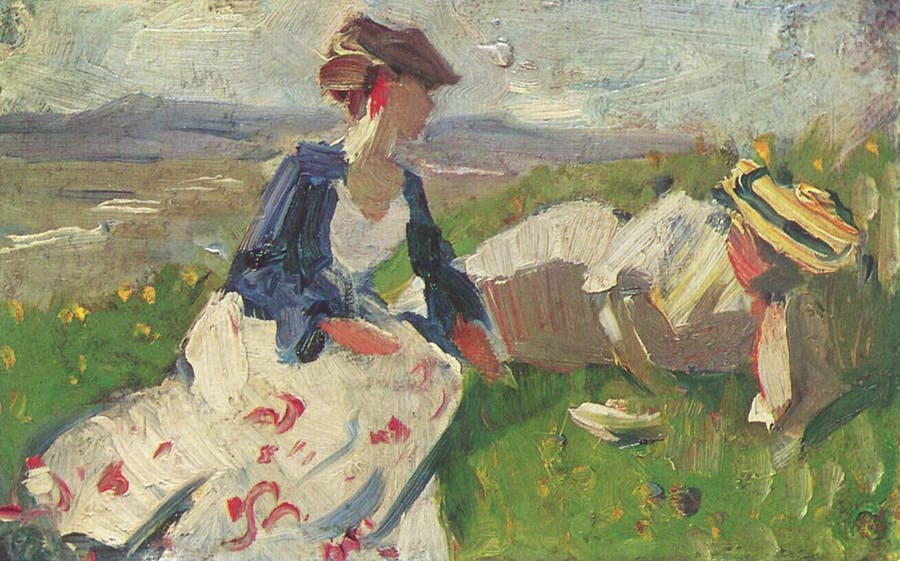
In 1906, Marc met the Berlin painter Marie Schnür and her student Maria Franck. A love triangle developed, although Marc was mainly drawn to Maria and they married a year later. However, it was a fake marriage arranged only so that Schnür could take her illegitimate child out of a different relationship. On the day of the wedding, Marc set out alone for the ‘honeymoon’ to Paris.
Related: Hilma af Klint: The Non-Figurative Pioneer
During his trip, Marc discovered an enthusiasm for the bold works of Vincent van Gogh and Paul Gauguin. Upon his return to Munich, however, he found that he too had ‘fans’, particularly the painter August Macke with whom he began a lifelong friendship. Marc developed professional relationships during this time too – in 1910 the industrialist Bernhard Koehler became his patron and supported him financially.
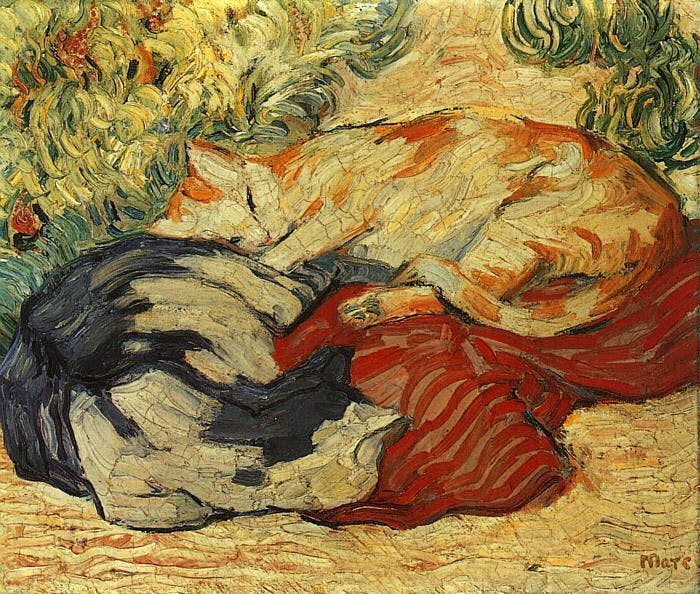
Want more artist biographies direct to your inbox? Sign up to our free newsletter
Marc’s private life, however, was not so rosy. In 1908, just one year after his wedding, Marc ended the fictitious marriage with Marie Schnür so that he could marry Maria Franck. However, Schnür – perhaps in a fit of unexpected jealousy – denounced the artist as an adulterer when divorcing, meaning that initially he was not able to remarry. Nevertheless, Marc and Franck lived happily together in Sindelsdorf and eventually married in 1913.
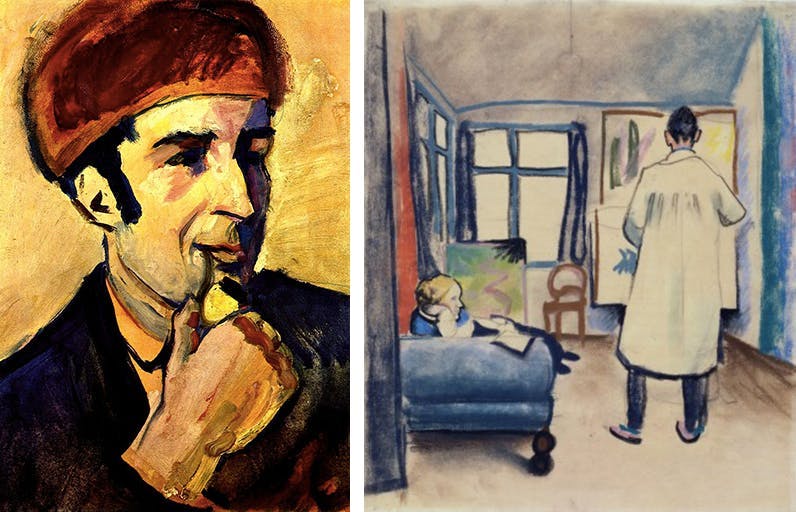
At the end of 1909, Marc visited the first exhibition of the Neue Künstlervereinigung München (N.K.V.M.), which he joined the following year. Other members included Wassily Kandinsky and his partner Gabriele Münter, and the second exhibition also showcased works by Georges Braque and Pablo Picasso, who were beginning to turn to Cubism.
Related: How Cubism Changed the World
The harmony within the N.K.V.M. was over almost before it began: Kandinsky wanted to paint more abstractly, which was not readily accepted by many members. Marc was on Kandinsky's side, and together with Gabriele Münter they left the N.K.V.M in 1911 and founded Der Blaue Reiter, which presented its first exhibition in the same year.
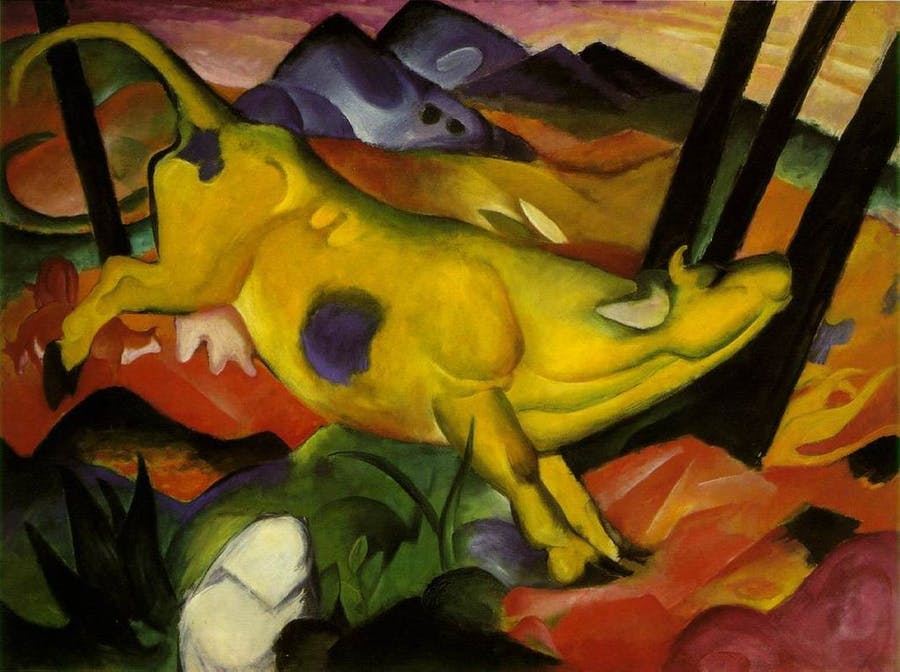
Related: Winter in 10 Artworks
The second exhibition was in 1912, and included works by Die Brücke members, such as Paul Klee. It also marked the publication of the almanac The Blue Rider, named after the movement which Marc described as "the latest painting movement in France, Germany and Russia" with “connecting threads with the Gothic and the primitive, with Africa, with the great Orient, with expressive original folk art and with children's art". Clearly, the impressions Marc had gathered from the Gothic cathedrals during his trip to France in 1903 were still in the back of his mind.
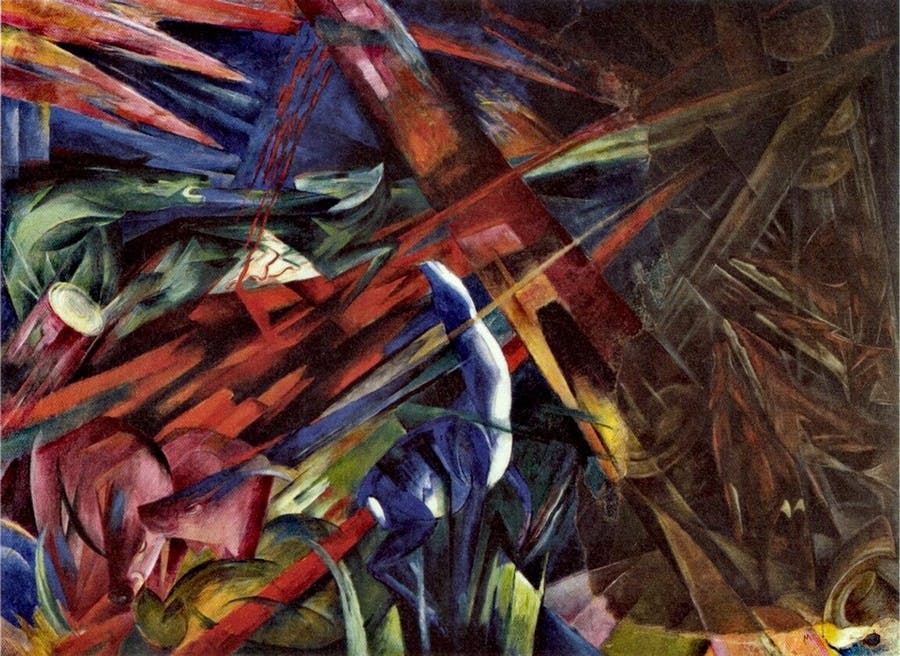
Related: Abstract Art: From a Genre to a Movement
In 1914, Franz and Maria Marc, now married, bought a villa in Benediktbeuren near Kochel am See. The painter, whose works became increasingly abstract with a ‘crystalline’ structure, did not spend much time there as he was drafted into military service with his friend August Macke later the same year. Macke fell in September 1914, and Marc fought for nearly two years before passing away on 4 March 1916, near Verdun.
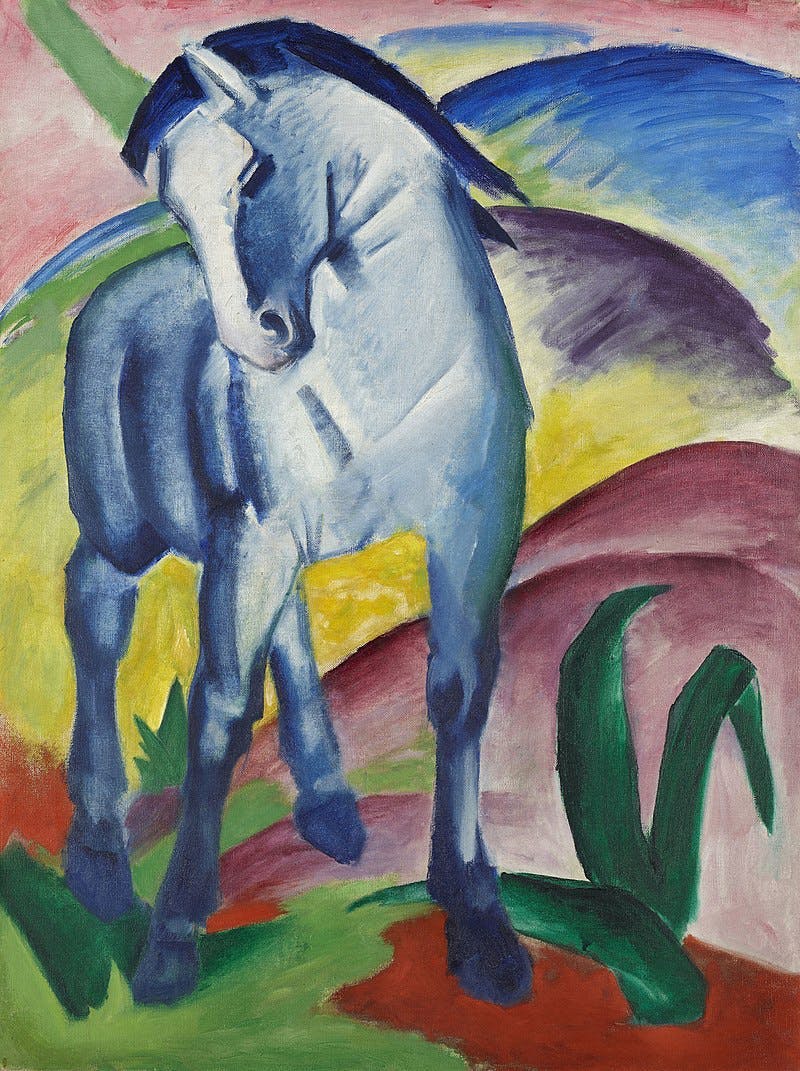
Related: The 6 Most Famous German Paintings
After Marc was first buried near Verdun, his widow Maria had his body transferred to Kochel am See in 1917. He was finally able to return to the place he has spent his childhood summers and discovered the love for nature that can be felt in each of his works.
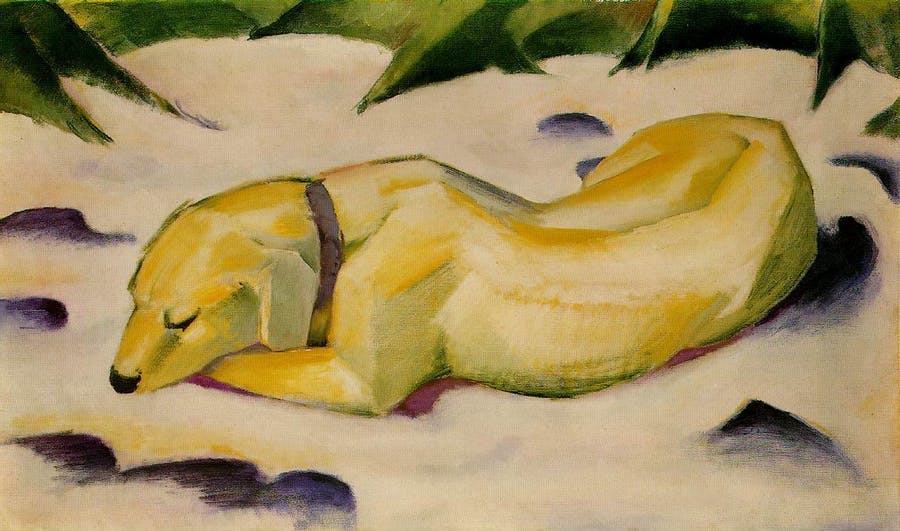
Related: Egon Schiele: A Singular Style
For Marc, depicting animals symbolized every creative force in nature in its purest form. In implementing his paintings, he used a color language: "Blue is the masculine principle, harsh and spiritual. Yellow is the feminine principle, gentle, cheerful and sensual. Red is the material, brutal and heavy and always the color that must be fought and overcome."
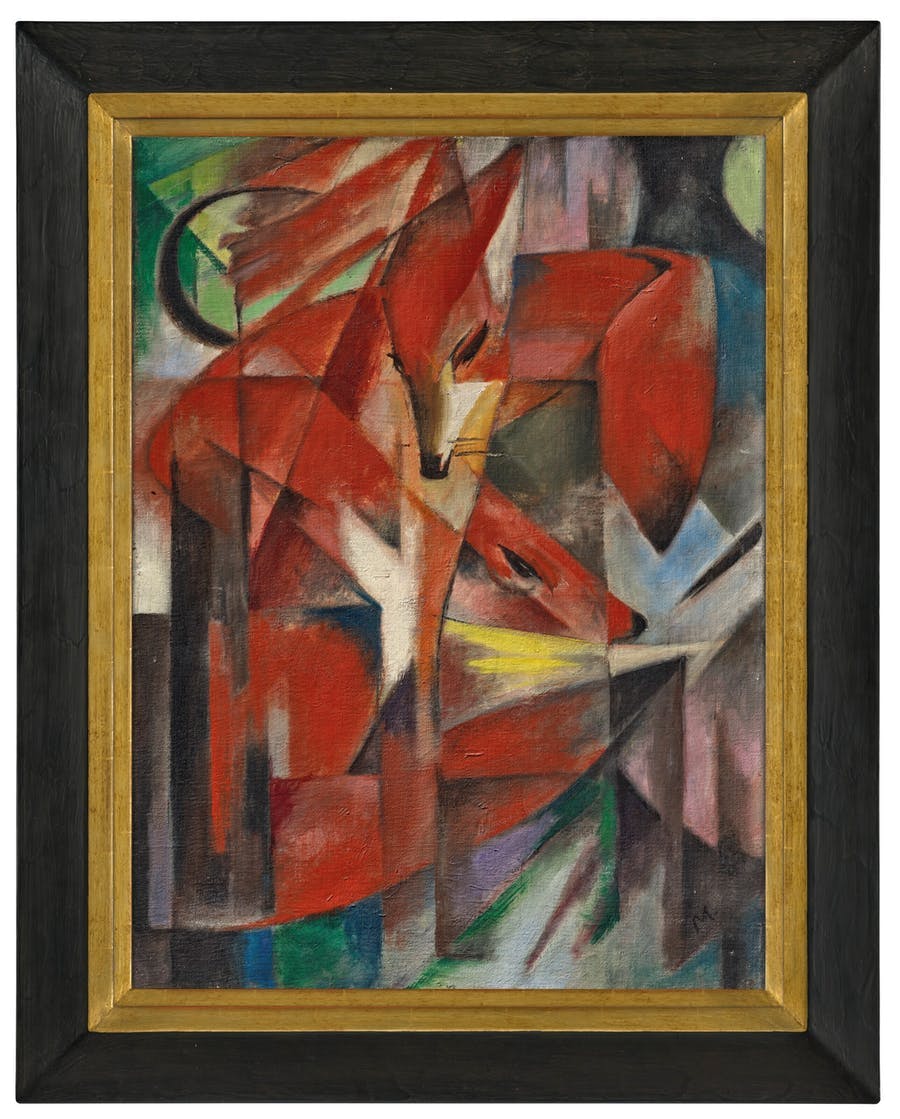
Marc left an oeuvre that included paintings, drawings, woodcuts and theoretical writings. His works still look modern today, and are traded on the art market for prices in the many millions. His current record was made on March 1, 2022 at Christie's in London for the 1913 oil painting The Foxes. The work sold for $56.4 million.
Discover more artist biographies with Barnebys Magazine
This is an updated version of an article originally published on September 3, 2020


